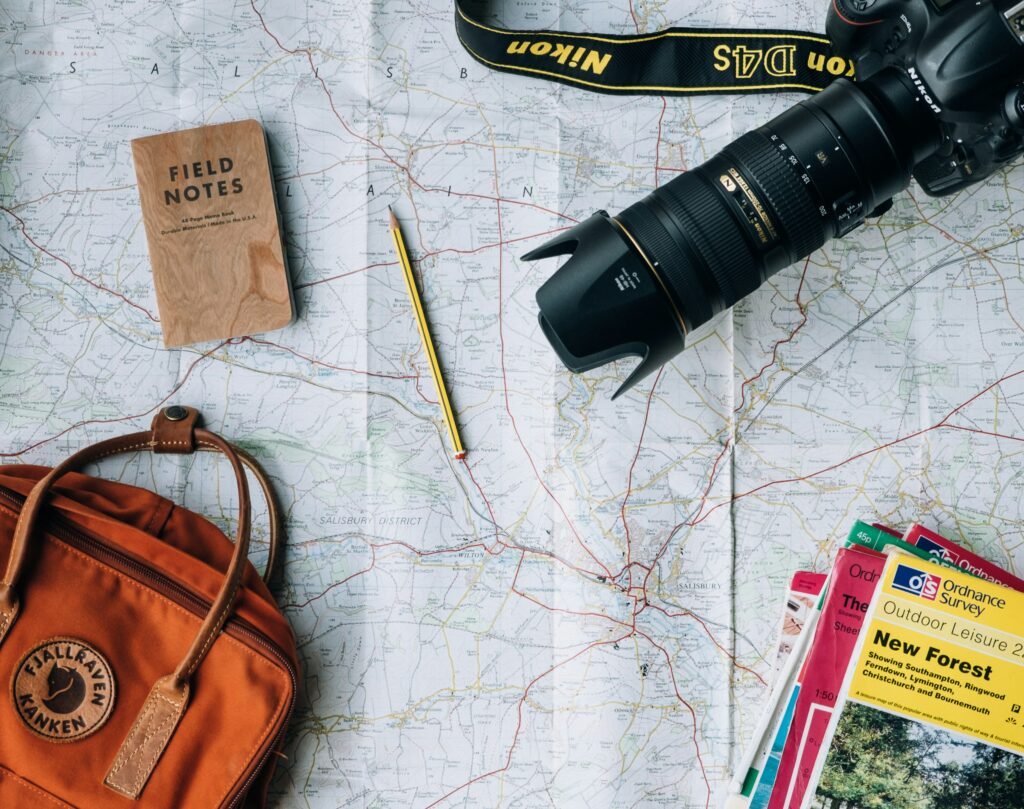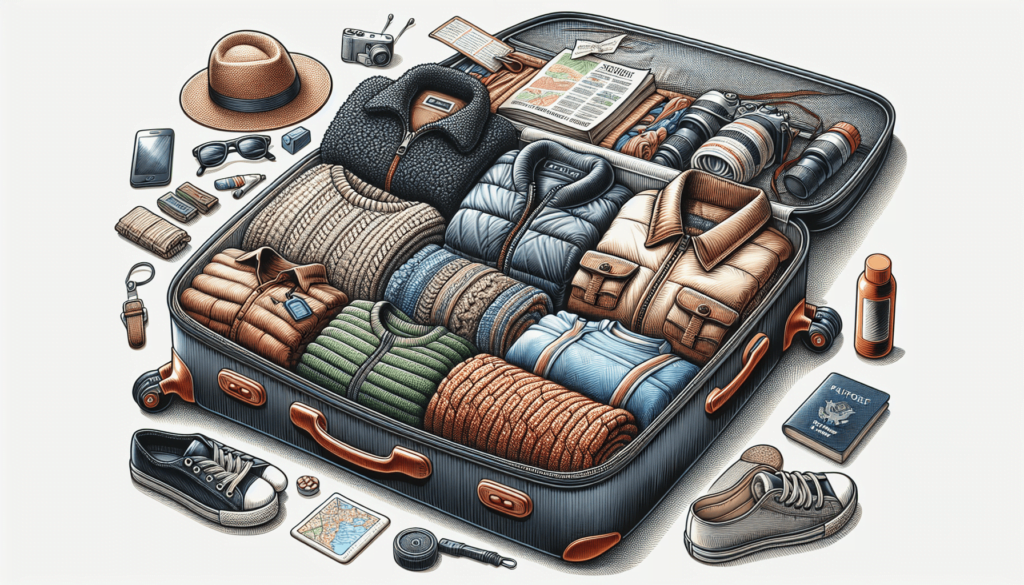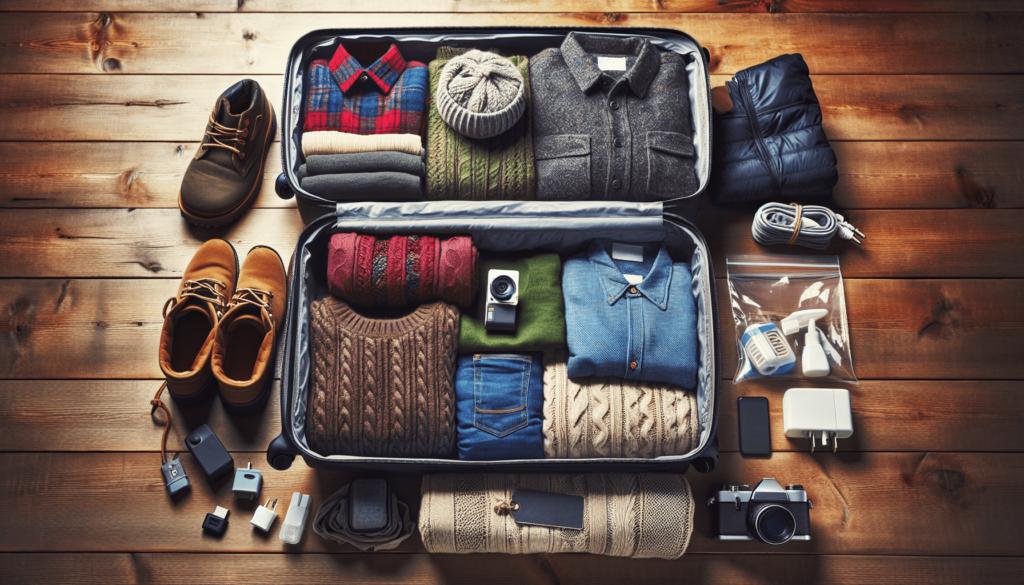Navigating the cerebral labyrinth of how to effectively pack for a multi-destination trip is a question that a multitude of travelers struggle with. The article throws light on the nuances of accommodating essentials for diverse climates, terrains, and cultures in a limited suitcase, all the while maintaining a sense of timeliness and relevance. From historical packing techniques to current trends that cater to strategic and minimalist packing, the article meticulously defines key concepts and engages the reader in a detailed exploration of the topic. With a blend of significant case studies and comparison of different packing strategies, it provides an evaluative analysis of the impacts and outcomes of various packing methods.
This discussion extends to future directions and implications, predicting forthcoming trends in packing for multiple destinations and deliberating their potential effects on the travel industry and societal travel norms. The reader is drawn towards the conclusion with a recapitulation of key highlights, enticing them with a thought-provoking final note. Building rapport and reader interaction is prioritized, encouraging them to explore the subject more comprehensively. Harmony of this discourse rests on the credibility and transparency of sources listed, inviting the reader to dive deeper into this interesting quandary.

This image is property of images.unsplash.com.
Table of Contents
Understanding the Basics of a Multi-Destination Trip
Explain what a multi-destination trip is
A multi-destination trip refers to travel that includes visiting multiple places in one journey. Instead of focusing on a single location, travelers explore an assortment of destinations, adding more range to their travel experiences. This type of trip can involve different countries or different cities within the same country. It demands careful planning, particularly around what to pack, due to the varying needs at each location.
Discuss the inherent packing complexities
Packing for such a trip could become complex as it involves taking stock of multiple factors such as weather conditions, local customs, and planned activities for each location. The challenge lies in packing optimally to cater to all of these needs without overpacking, which can result in issues like increased luggage fees, excess baggage to manage, and difficulty moving around.
Highlight the benefits of packing efficiently for multi-destination travels
Efficient packing can make multi-destination trips much more convenient and enjoyable. By avoiding overpacking, travelers not only eliminate unnecessary clutter but also have room for souvenirs or other items picked up along the journey. Also, lugging smaller luggage around eases travel between destinations, ensuring better mobility and less strain.
Essential Packing Considerations
Talk about the varying weather conditions
When traveling to various destinations, weather conditions could vary significantly. A traveler might experience summer in one city, rainy weather in the next, and cold temperatures in others. Thus, packing should include suitable clothing and gear that can adequately accommodate these weather differences, ensuring comfortable travel.
Discuss the local customs of locations to be visited
Respecting the local customs and norms of the locations to be visited is a vital consideration when packing. Some places might require modest dressing or specific attire for entry into certain sites. These details must be investigated and taken into account while packing to avoid any inconvenience or unintentional disrespect towards local cultures.
Examine the different activities planned for each destination.
The planned activities at each destination contribute significantly to packing decisions. If the itinerary includes swimming, hiking, formal dinner events, or other specific activities, suitable attire and equipment must be included. Understanding these requirements per location helps refine the packing list to match the actual needs of the travel.
Building a Packing List
The importance of creating a comprehensive packing list
Having a comprehensive packing list is crucial for multi-destination trips. It helps travelers to keep track of their belongings and ensure nothing essential is left behind. Furthermore, it serves as a guide for repacking at each destination, thereby minimizing the risk of losing any items.
How to tailor your packing list to your travel destinations
Customizing the packing list according to each destination is a beneficial method to ensure suitable preparation. This might involve adding weather-appropriate clothing, necessary gadgets, specific accessories, or any other equipment, depending upon the logistics of the destination and planned activities therein.
Tools and apps to assist in crafting an effective packing list
Numerous tools and apps are available to assist travelers in creating effective packing lists. These apps consider various factors such as the weather, length of stay, and activities planned to recommend a detailed list of items that should be packed, thereby simplifying the packing process and ensuring that nothing is overlooked.
Pack Versatile Clothing
Define what versatile clothing is and how it helps in multi-destination trips
Versatile clothing refers to clothes that can be worn in multiple ways or under various circumstances. This could include items that can be layered and mixed or matched, are appropriate for various weather conditions, or can transition from day to night. Versatile clothing reduces the number of clothes needed for a trip, thus saving considerable space.
Tips on selecting versatile apparel
Choose clothing in coordinating colors to mix and match easily. Go for items that can be layered, like tanks, tees, long-sleeves, and jackets, to adapt to different weather conditions. Also, select items that can transition from casual to formal, like a simple black dress or a pair of sleek dark jeans, ensuring preparedness for unexpected events.
Address how to pack clothing to minimize space usage
Rolling clothes instead of folding, using packing cubes, and packing lightweight materials can all help to minimize space usage in luggage. Moreover, packing clothes that can be worn multiple times in different ways reduces the overall bulk, making the packing more efficient.

This image is property of images.unsplash.com.
Packing Based on Travel Modes
Discuss packing considerations for air travel
Air travel typically imposes restrictions on luggage weight and dimensions, making it necessary to pack smartly. It’s beneficial to pack larger, bulky items in the carry-on, while smaller, denser items can go in the checked luggage to efficiently utilize space. Additionally, ensure essentials, valuable items, and fragile items remain in the carry-on for easy access and security.
Advice on packing for road trips or train travel
Packing for road or train travel is generally less restrictive than air travel. However, minimizing luggage still improves the travel experience. Separating items into different bags based on need of access can be handy, and using soft shell luggage can aid in squeezing more bags into tight trunk or overhead spaces.
Discuss any differences in packing for a cruise
Cruise travel requires careful consideration regarding formal dress codes for dinners, accessories for on-board activities, and even sea-sickness aids for some. Additional items might include swimwear, beachwear, and footwear suitable for both on and off-ship explorations. It also helps to pack a small bag for leaving the ship, loaded with essentials for each port of call.
Managing Luggage
Explore the pros and cons of different luggage options
Choosing the right luggage depends on the kind of travel and personal preferences. Hard-shell luggage offers durability and protection but might weigh more. Conversely, soft-shell luggage is flexible, lighter, and usually expands to accommodate more items but may be less protective. Likewise, backpacks and duffel bags have their advantages for certain kinds of travel.
Explain how to optimally organize luggage
Organizing luggage optimally includes grouping like items together, using packing accessories like cubes or compression sacks, and distributing weight evenly in the suitcase. It’s better to pack heavier items at the bottom, near the wheels, to ensure stability. Moreover, keeping items that might be needed during transit, like documents, toiletries, or snacks, within easy reach is sensible.
Discuss tips on handling luggage during travels
Handling luggage during travels can be made easier by attaching a colorful or distinctive tag, making it easier to identify, keeping all the travel documents handy, and checking the weight of the luggage beforehand to avoid any surprises at the airport. Moreover, getting a luggage lock ensures the safety of possessions.

This image is property of images.unsplash.com.
Packing Accessories and Gadgets
Discuss the value of travel accessories
Travel accessories such as packing cubes, toiletry bags, and luggage tags are immensely valuable when packing for multiple destinations. They not only help in organizing items but also in accessing what’s needed easily.
Explain effective packing of gadgets
Packing gadgets effectively involves keeping them cushioned, preferably in their respective cases, and ensuring their chargers are packed along. Smaller gadgets can be packed in a designated electronics bag while larger ones can fit in the main luggage. Also, ensuring all gadgets are fully charged and bringing along universal adaptors if traveling internationally is important.
Highlight essential travel gadgets and their uses
Essential travel gadgets might include a smartphone, camera, universal adapter, and portable charger. While a smartphone or camera is essential for capturing memories, a universal adapter ensures that charging needs are met whatever the plug type at the destination. A portable charger can be a savior when outlets are unavailable, ensuring continued use of electronic devices.
Smart Packing Techniques
Introduce several packing techniques like rolling, packing cubes, etc.
Several packing techniques can help maximize space and keep luggage organized. Rolling clothes instead of folding can save space and reduce wrinkles. Packing cubes can help in segmenting clothes and other items, thereby increasing accessibility. Using compression bags for bulky items like jackets can also save a considerable amount of space.
Explain how these techniques save space
These packing techniques maximize usable space by condensing items and organizing them efficiently. Rolling clothes tightly takes up less space than folded clothes. Similarly, packing cubes compartmentalize belongings, making efficient use of suitcase space. Compression bags remove air from around items, allowing them to take up less room.
Address how different techniques are suitable for different types of items
Different packing techniques work best for different types of items. Clothes, for instance, save space when rolled or packed in cubes. However, breakables, shoes, or toiletries might not be suitable for such methods. Instead, they could be protected with bubble wrap, packed in rigid cases, or placed in waterproof pouches to prevent any damage or spillage.

Items to Pack Last
List out items that should be packed last and why
Items that should be packed last are those that might be required during transit or immediately upon arrival. This includes travel documents, identification, cash, credit cards, mobile phone, headphones, snacks, a water bottle, toiletries, and any necessary medication.
Discuss the importance of these items’ accessibility
These items, being frequently used or imperative in emergencies, should be easily accessible. Struggling to locate these in a hurry can create unnecessary stress. By packing them last, preferably in a carry-on bag or an easily accessible compartment, travelers can ensure these are within grasp whenever needed.
Provide tips to remember to pack these items
To remember to pack these last-minute items, having a separate checklist can help. Additionally, setting reminders or alerts on electronic devices is a good way to avoid forgetting these essentials. Some find it useful to have a dedicated bag or compartment for these essentials to ensure they are all in one place.
Re-evaluating and Adjusting your Packing List
Discuss the importance of reviewing your list
Reviewing the packing list is a crucial step before closing the suitcase. It allows travelers to double check if all necessary items are packed and nothing essential is overlooked. Moreover, it might reveal unwanted items that were packed initially but not really needed, thus freeing up space and weight in the luggage.
Explain how to make adjustments to your packing list
Depending on the review, adjustments might be needed. This could mean removing unnecessary items, adding overlooked essentials, or rearranging items to better organize the luggage. Such adjustments help in refining the packing list to ensure it is as efficient and functional as possible.
Advice on how to optimize your packing list after each travel
After each travel, reflecting on what was beneficial and what was not can aid in optimizing the packing list for future trips. This feedback, based on personal experience, helps travelers to learn from past mistakes, make necessary adjustments, and improve their packing strategy for subsequent travels.

Related site – Forget the kitchen sink – efficient packing for a multi-centre holiday
Delicious Discoveries: Exploring the Intersection of Food and Travel
